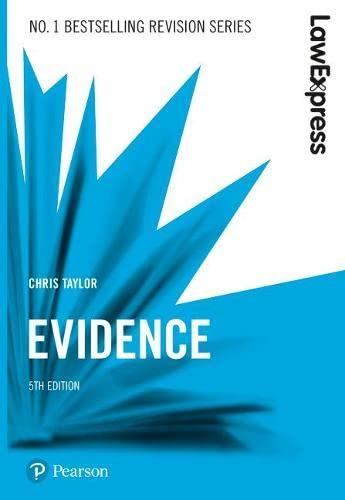Question
Build either an outline, table, or diagram which describes the types of legal and equitable remedies. A remedy is given to restore an injured or
- Build either an outline, table, or diagram which describes the types of legal and equitable remedies.
A remedy is given to restore an injured or aggrieved person to the position they were in before the injury or wrongful action occurred.
Remedies can generally be divided into two categories: legal and equitable. Legal remedies allow the non-breaching party to recover monetary damages. In contrast, equitable remedies are non-monetary solutions to resolve the disputed issue.
- In addition to these two remedies, a court may also order a declaratory judgment. This is where the court determines individual rights in a particular situation without awarding damages.
Equitable remedies are typically granted when legal remedies or monetary compensation cannot adequately resolve the wrongdoing. It is often a requirement that legal damages be unavailable before a court will decide to issue equitable relief. Equitable remedies can include:
- Specific Performance: A court order which requires the party in breach to completely perform their part of the bargain according to the contract. For example, this can include requiring the breaching party to deliver goods which have already been paid for, or to render payment for services.
- Contract Rescission: This is where the old contract which was breached is rescinded or cancelled. A new contract may be written which more clearly addresses the different needs of each party.
- Contract Reformation: The former contract is rewritten in a manner that reflects the true intentions of each party more accurately. The remedy of reformation requires that a valid, working contract be in existence (otherwise there is nothing to re-write). Reformation is often prescribed where there was a mistake or misrepresentation in one of the contract terms. A contract may be reformed in whole or in part. Reformation is sometimes called "rectification.
- Injunction: A court order that demands a party to stop doing a specific act because the act is causing irreparable injury to the plaintiff which monetary damages cannot replace.
- Constructive Trust: Where defendant wrongfully obtained plaintiff's property and the defendant has used plaintiff's property to increase the value of his own property.
Step by Step Solution
There are 3 Steps involved in it
Step: 1

Get Instant Access to Expert-Tailored Solutions
See step-by-step solutions with expert insights and AI powered tools for academic success
Step: 2

Step: 3

Ace Your Homework with AI
Get the answers you need in no time with our AI-driven, step-by-step assistance
Get Started


